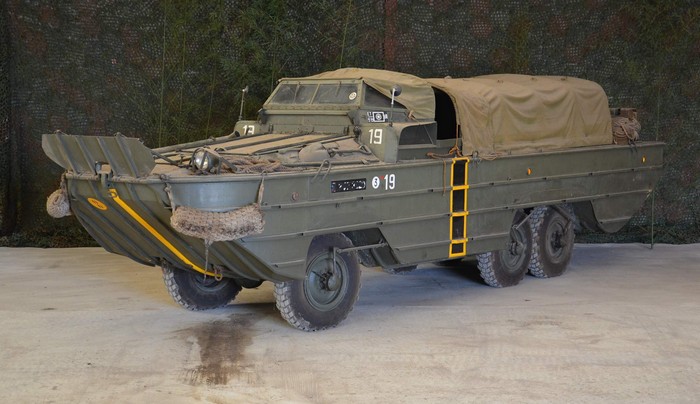Chassis Number: 18200
Initially, the DUKW was rejected by the U.S. Army, but the unexpected rescue of a ship that had run aground convinced them of its efficiency and seaworthiness, subsequently confirmed by a channel crossing. Developed by Sparkman & Stephens in collaboration with General Motors Corporation, each letter of its name has a meaning: “D” for a vehicle designed in 1942; “U” for utility; “K” for front-wheel drive: “W” for two rear axles. Understandably, it was known colloquially as the “Duck.” Derived from the GMC ACKXW, it had a 4.4-liter, 6-cylinder Chevrolet engine that was capable of propelling the vehicle to 80 km per hour (50 mph) on land and approximately 10 km per hour (6.2 mph) in water, thanks to the propeller situated at the rear.
Capable of transporting goods or 15 to 20 people plus equipment, several thousand examples of this amphibious vehicle were built and used in many different combat theaters including the Pacific Islands, in Europe for the Normandy landings — and in Belgium and the Netherlands.
Bought by the current owner in 1992 in a government auction, the DUKW on offer is running and complete. It comes with all its accessories such as the bilge pump, full cover, ropes, fenders, anchors, tool kit, etc. This is very rare for this type of vehicle. According to the registration document, it was first put into service in 1945, although it was probably built two years earlier. In good original condition, this vehicle was passed to the SNECMA by the French army at the start of the 1960s. It has therefore spent most of its life in Normandy. Amphibious vehicles are rare, and this opportunity is bound to attract enthusiasts.

